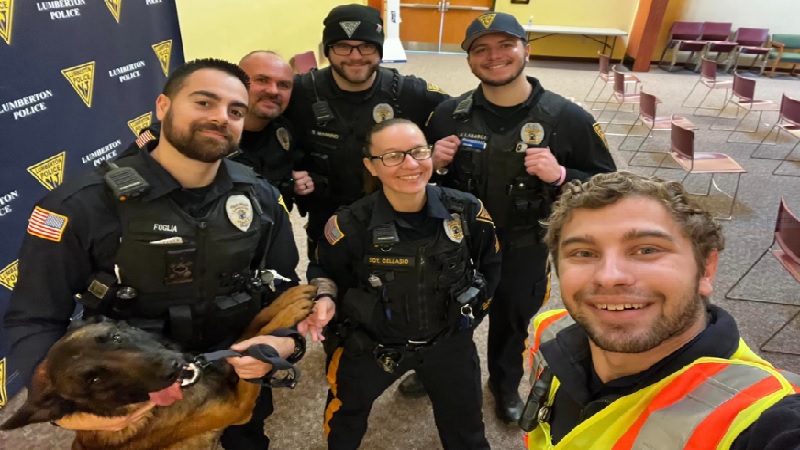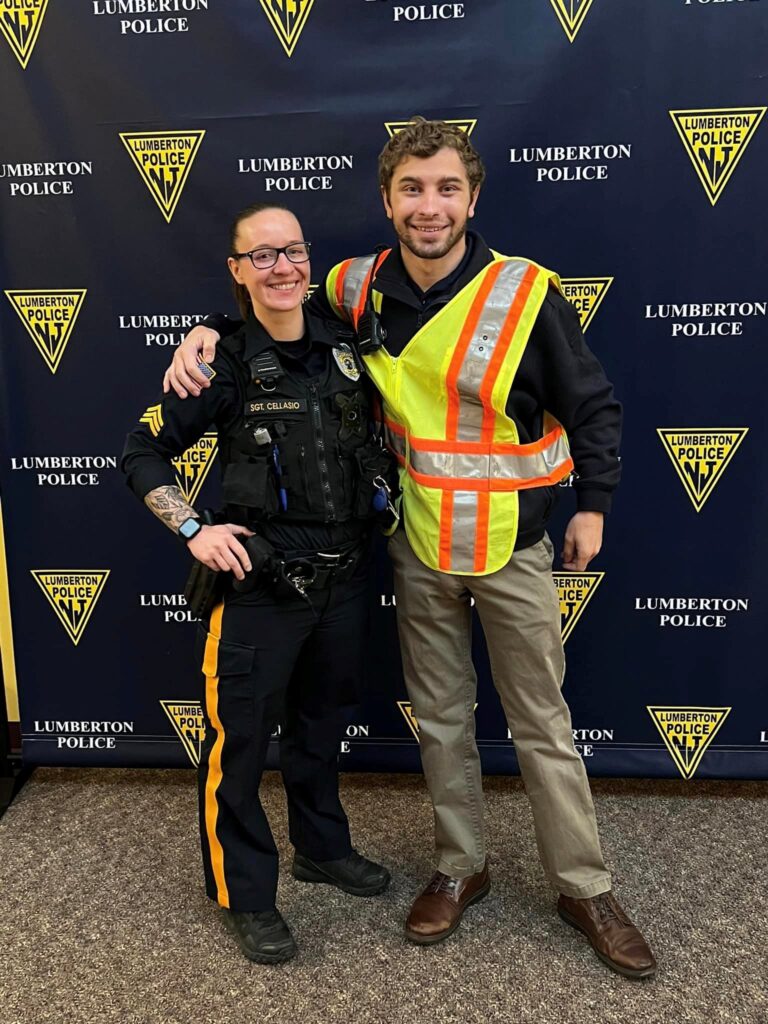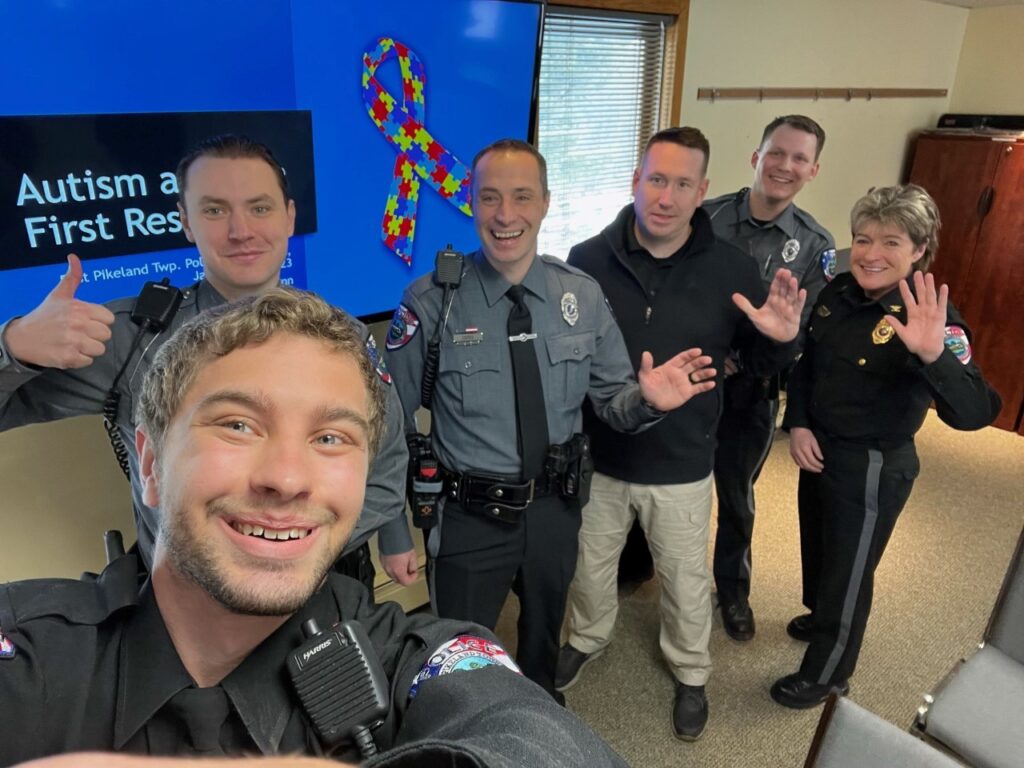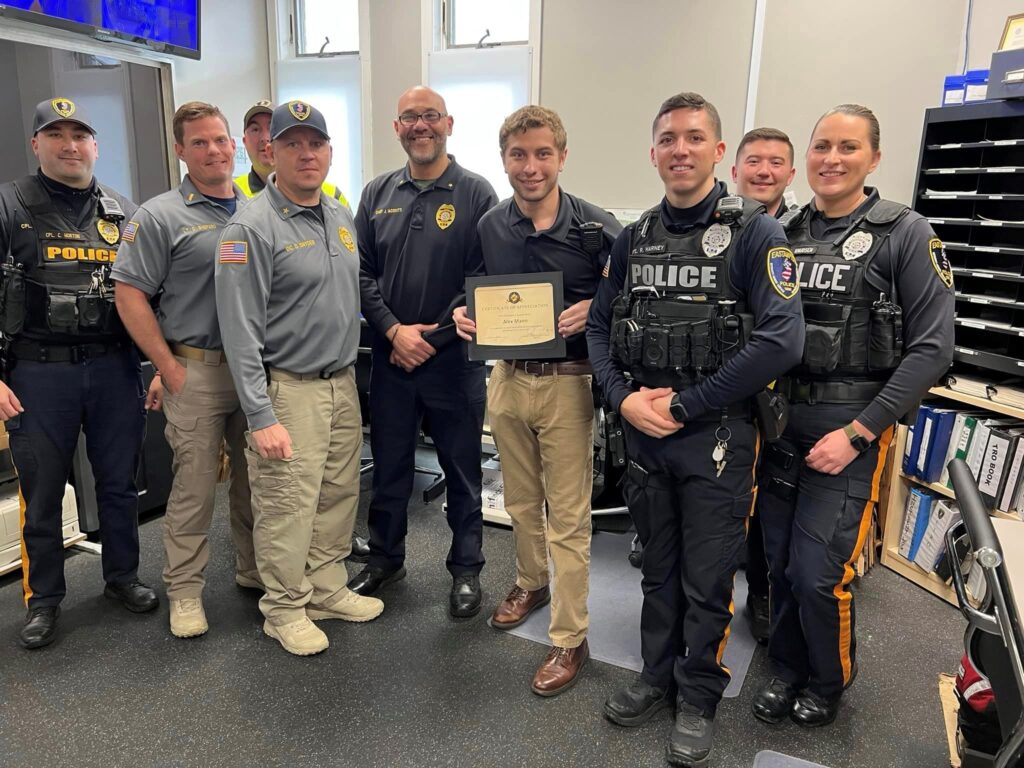
A 22-year-old autistic man named Alex Mann recently visited the Lumberton Township, New Jersey police department, chalking up his 291st visit to a law enforcement agency. Besides his admiration of cops, Mr. Mann is touring the American landscape to teach cops about the many dynamics of autism and how to handle interactions with this special-needs demographic.
His whirlwind itinerary spans five states so far: Delaware, Maryland, New Jersey, Pennsylvania (his home state), and even California! His most recent stop was the “Liberty and Prosperity” state of New Jersey…
“The Lumberton Township Police Department (LTPD) had the honor of meeting Alex Mann [on January 30, 2023].
“Alex is a 22-year-old with autism, who has visited over 291 police departments, in five different states, over the past three years spreading awareness and information to law enforcement on how to interact with people with autism.
“He’s currently trying to visit all of the Burlington County police departments & LTPD was the 291st department he visited to date!
“While Alex was at LTPD, he was given a complete tour of the station and spent some time checking out our patrol vehicles.

(Photo courtesy of the Lumberton Township Police Department.)
“We wish you good luck in continuing with your mission, and just know that the LTPD will always be a friend. Thank you for visiting us!”
That is yet another example of Community Relations 101 in the books.

(Photo courtesy of the Lumberton Township Police Department.)
Increasingly, public safety agencies are adopting autism principles and incorporating pertinent training in police academy curricula and/or roll call briefings so that law enforcement officers have a better understanding of this complex neurological disorder.
The private sector offers academic instruction and implores cops to study autism education materials. With the evolution of autism, the International Board of Credentialing and Continuing Education Standards (IBCCES) states that “now more than ever, law enforcement officers need to better understand how to communicate and engage with autistic individuals to ensure the safety and well-being of all community members.”
When I was in the police academy, autism was mentioned and relatively discussed but not deeply delved into. Back then, the information from studies and anecdotal experiences was not near what we know nowadays, hence the emphasis made by the IBCCES.
Some of the autism factors for cops to consider are:
- Elopement and Safety
- Scenario-Based Practices
- Mistaken Mannerisms
- Parent-Caregiver Perspective
Looking at that last one, for my colleagues I conveyed what I knew as a parent of an autistic child and magnified it from a cop’s perspective.
As a father of an autistic child, absorbing as much as I could from my daughter’s clinical team (over two decades ago), my professional experiences as a policeman enabled me to better relate to those afflicted with autism and adapt as nuances were observed (which makes Mr. Mann a godsend with acute lessons for cops to learn).
Primarily, though, I was often summoned to calls for service involving an autistic citizen. I was content with having unique knowledge and personal experience to apply accordingly. Boasting aside, I became the agency’s “go-to guy for autism-related calls.”
I never had to grasp the reality of SIBs (self-injurious behaviors) until my daughter developed this type of hardship at around age five. It resulted in employing headgear and other specially designed body-protecting safeguards to absorb self-inflicted impacts.
The surreal nature of this aspect of autism is often difficult to comprehend, thus cops hearing it from another cop with first-hand experiences exposes to public safety officers the hardships right from someone who lives on that frontline, laden with insights for cops to process atypical behavior they are witnessing and how best to mitigate.
Here is a brief video from a father, who is also a cop, in similar constructs:
Much of what I learned about the intense nuances of autism (SIBs) was via several licensed behavior analysts who make admirable efforts to “redirect” and deter self-harming behaviors. As well, SIBs sometimes segue in assaultive behaviors to others, usually anyone trying to stop the self-hitting. Therefore, to a cop, this construct can easily be translated as battery against a law enforcement officer. I always had looks of consternation from other cops when I explained that anomaly —understandably—hence exploring the subject matter deeply.
Whereas impulses regarding aggression are present, the intent is dubious due to the dynamics of autism. For example, my daughter pushes off anyone trying to stop (redirect) her SIBs, not to harm anyone but to address bad stimuli in the realm of high anxiety. Candidly, I can see why anyone would misconstrue that reality-based scenario, thus training police officials much more broadly in aspects of autism is crucial.
The Autism Research Institute (ARI) studies self-injurious behaviors, offering Causes and Interventions for Self-Injury in Autism, a good guide for cops to consume.
As for the routine gadgetry and electronics employed in the law enforcement profession, autistic individuals may exhibit overwhelm and overstimulation, materializing in certain behaviors.
Besides ARI, the National Institute of Neurological Disorders and Stroke (NINDS) explains the distinctions of autism spectrum disorder.
For some, factors are exacerbated by a non-verbal nature. Studying past experiences of some cops who encountered seeming resistance from different autistic citizens, it was not necessarily the LEO’s fault for not knowing that a siren would be the bane of someone with autism (sensory overload). Same for the emergency lights, especially at night (more sensory overload). Cops are trained to give verbal commands and, by the nature of their duties, ask questions; autistic folks sense tone and may react behaviorally to too many inquiries. Conversely, they may not react at all (difficulty processing stimuli) and be deemed as oppositional or resistant.
Some police organizations have among them cops who have studied American Sign Language (ASL) in college or learned the communication method otherwise. It is what I use to correspond with my daughter.
Similar to what Mr. Mann is doing with/for cops and community relations, a young lady named Catherine Fitzgerald developed a sign language program for police officers. As an element of a criminal justice studies project, she headed a classroom full of LEOs learning this skill.
Via the East Pikeland Township Police Department, I discovered the PowerPoint program “Autism and First Responders” which Alex developed and teaches cops in roll call settings and training rooms:

(Photo courtesy of the East Pikeland Township Police Department.)
As long as bureaucratic boots don’t come crashing down on growth and career development, law enforcement officers beckoning training of all sorts are sometimes benefactors of citizens catering unique skills and insights, sharing knowledge with police personnel in communities across the country.
Circling back to Mr. Mann and others meeting cops in the middle, bravo to each of you for taking the time to traverse the land and expressly offer insights to law enforcement officers.

(Photo courtesy of the Eastampton Township Police Department.)
On behalf of the Eastampton Township Police Department, Chief Joseph Iacovitti provided offered some deserving accolades for Alex, saying, “we commend you for all that you are doing. You are bridging a gap and it cannot be overstated, of the impact you are having. We commend you and thank you for all that you are doing and continue to do in your work.” After, Alex was provided with a certificate of appreciation.
In that same area is the Westampton Township PD, which, due to Alex’s visit, wants to incorporate special training in a law enforcement class taught by him:
“While Alex was at WTPD, he was teamed up with Lt. Ferguson and given a complete tour of the station. Alex then spent some time checking out our police vehicles as well. Alex then had an opportunity to speak with all the officers that were working that day.
“Alex even sat down with some of the officers and had lunch. Lt. Ferguson provided Alex with a set of departmental patches, including our Autism Awareness Patch and a new challenge coin.
“Alex then met with Lt. Ferguson to discuss coming back in the future and instructing a class for all the officers in dealing with ‘Autism and the First Responder.’” How about that?
Now, of the almost 300 police departments Alex has visited, he’s scored tons of law enforcement swag in the form of official police hats, shirts, vests, shoulder patches, challenge coins, and badge stickers. But he didn’t tour the country’s police precincts and stations without his